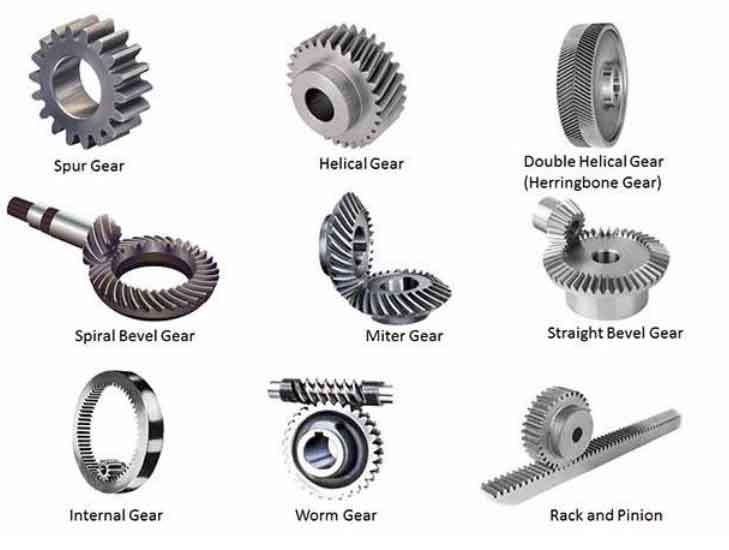Worm gears and herringbone gears are two popular types of gears commonly used in various mechanical systems. While they both serve similar purposes, there are notable differences between them. Let’s delve into a comparative analysis of worm gears and herringbone gears to understand their characteristics and applications.

- Design and Operation:
- Worm Gears: A worm gear consists of a cylindrical screw-like gear called the worm and a toothed wheel called the worm wheel. The worm gear typically has a single thread helix, and the worm wheel has teeth that mesh with the worm. Worm gears provide a high gear ratio and are capable of transmitting motion between non-parallel shafts.
- Herringbone Gears: Herringbone gears, also known as double helical gears, have two sets of teeth with a V-shaped groove. The V-shaped teeth eliminate axial thrust forces, making them self-aligning and capable of transmitting high torque loads. Herringbone gears are often used in applications requiring high-speed and high-power transmission.
- Efficiency:
- Worm Gears: Worm gears generally have lower efficiency compared to other gear types. This is due to the sliding action that occurs between the worm and the worm wheel, resulting in higher friction and heat generation. The efficiency of worm gears typically ranges from 30% to 90%, depending on factors such as gear material, lubrication, and tooth profile.
- Herringbone Gears: Herringbone gears are known for their high efficiency. The double helical tooth design helps to balance axial thrust forces, reducing the risk of gear misalignment and improving efficiency. Herringbone gears can achieve efficiency levels above 95%.
- Torque Capacity:
- Worm Gears: Worm gears have excellent torque-carrying capacity. The large contact area between the worm and the worm wheel allows for effective power transmission. They are often used in applications that require high torque, such as heavy machinery, conveyor systems, and automotive differentials.
- Herringbone Gears: Herringbone gears are also capable of transmitting high torque loads. The double helical tooth design ensures uniform load distribution, enhancing the gear’s load-carrying capacity. They are commonly found in heavy-duty applications like marine propulsion systems, turbines, and industrial gearboxes.
- Noise and Vibration:
- Worm Gears: Worm gears tend to produce more noise and vibration compared to herringbone gears. The sliding action between the worm and the worm wheel generates additional friction, resulting in noise and vibration. Proper lubrication and tooth design can help mitigate these effects to some extent.
- Herringbone Gears: Herringbone gears exhibit better noise and vibration characteristics due to their double helical tooth arrangement. The opposing helix angles cancel out axial forces and minimize gear deflection, leading to reduced noise and vibration levels during operation.
- Lubrication and Maintenance:
- Worm Gears: Worm gears require effective lubrication due to the sliding contact between the gear surfaces. Lubricants help to reduce friction, heat generation, and wear. Regular maintenance, such as oil changes and inspection for wear and backlash, is necessary to ensure proper operation.
- Herringbone Gears: Herringbone gears also benefit from lubrication, but their efficiency and load-carrying capacity allow for less frequent maintenance intervals. The self-aligning nature of herringbone gears reduces wear and backlash, contributing to longer gear life.
In summary, worm gears and herringbone gears have distinct characteristics that make them suitable for different applications. Worm gears excel in transmitting high torque between non-parallel shafts, while herringbone gears are ideal for high-speed, high-power applications with low noise and vibration requirements.
